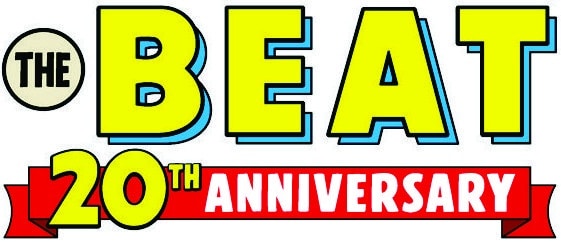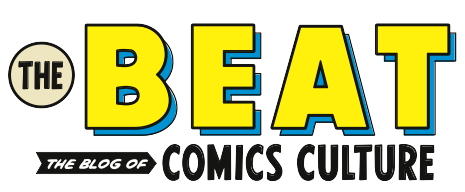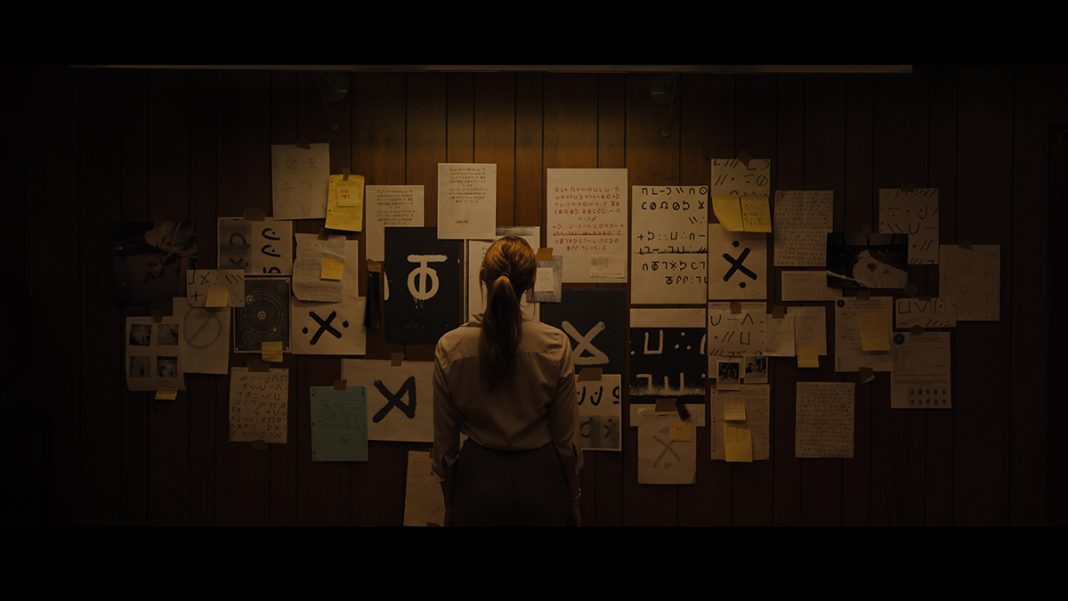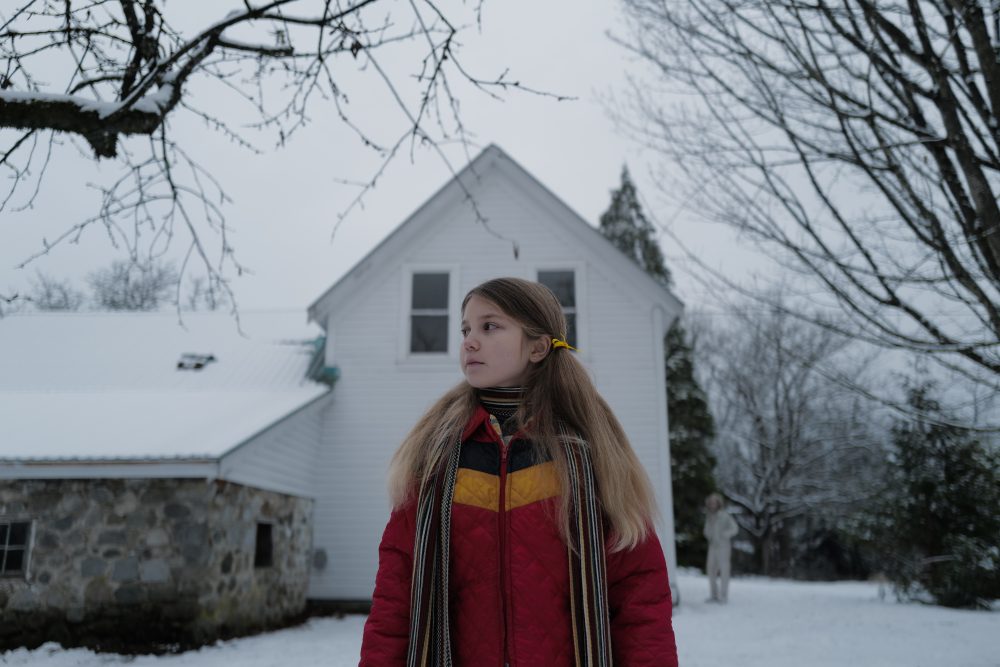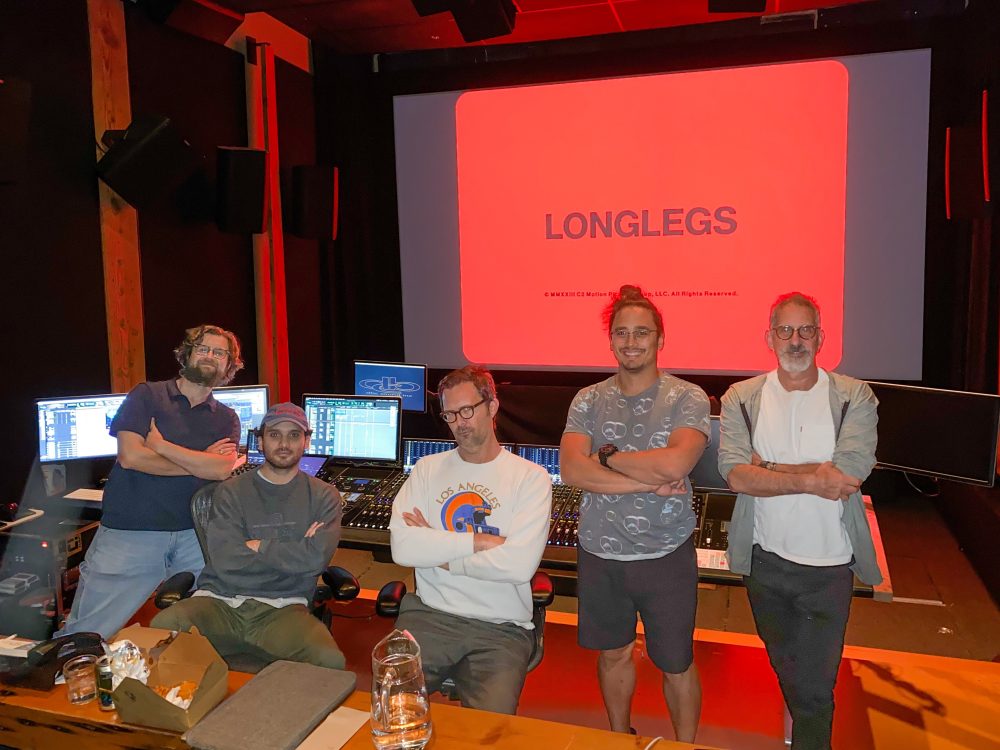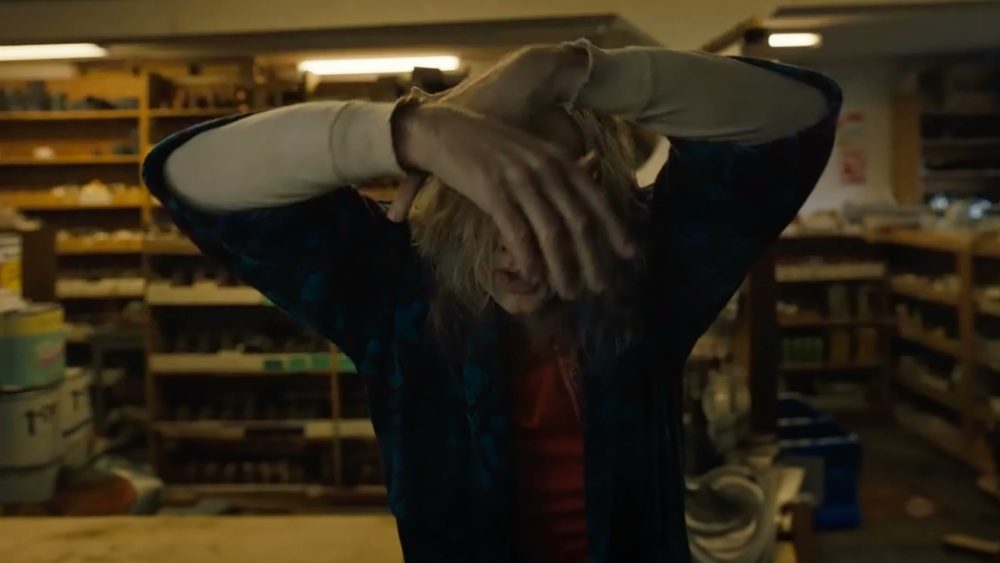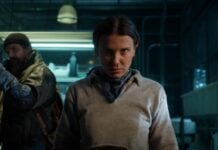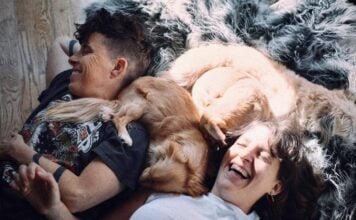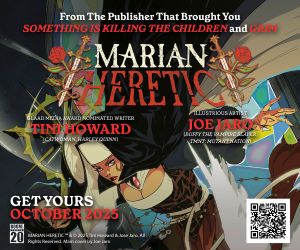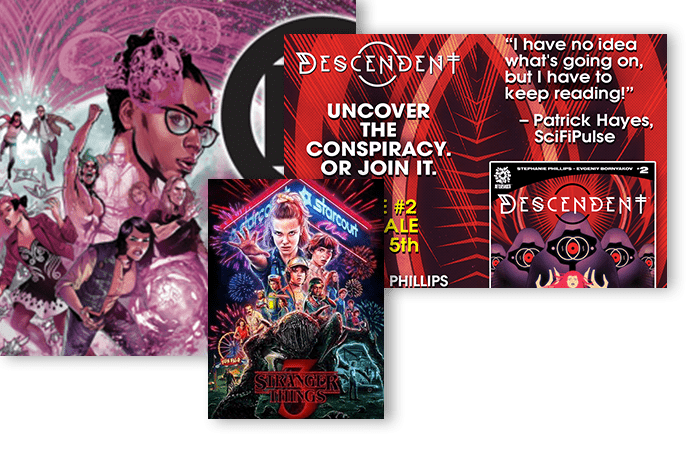Written by Gabriel Serrano Denis
Evil is loose in the world – Longlegs, Osgood “Oz” Perkins’ singular Satanic, serial killer opus has finally graced (cursed?) screens with Nicolas Cage’s new monstrous creation and Maika Monroe’s intense performance as the FBI investigator tracking him down. The film has grossed close to $50 million dollars and is en-route to become NEON’s biggest film ever. A hype-fueled marketing campaign ensured horror hounds and intrigued moviegoers would blow the doors down on its opening weekend, but the film has also secured steady viewership despite heavy competition from blockbuster fare in its second week. Thus, it’s clear that based on the numbers and critical reception, Longlegs has become the horror success story of the year, and its evil power stems not from demonic forces but from the masterful craft on display in every terrifying frame, its subliminal sound, and each purposeful cut.
Editors Greg Ng and Graham Fortin, already on board Perkins’ next two films, Keeper and Stephen King’s The Monkey, bring an impressive understanding of pace and tension to an already sinister piece of filmmaking. With experience editing documentary and serialized work as well as narrative features (they collaborated on the underrated found-footage vampire gem Afflicted in 2013), Ng and Fortin were not afraid to experiment and try different approaches to the precise and dense atmosphere of Longlegs.
This experimentation and command of pacing brings together the film as it shifts from a procedural to a living nightmare. The editors had to gauge when to hold on to a particularly scarring shot and when to cut away just in time to let the fear creep in. The result is unobtrusive but precise, shocking in its quotidian approach to such violent and oppressive happenings. There is no surfeit of impressive filmmaking craft in Longlegs, and the editing stands amongst its most effective boons. The Beat spoke with Greg Ng and Graham Fortin to further elaborate on what went into editing what would become the defining horror film of 2024.
GABRIEL SERRANO: The first question is simple: do you guys feel any regret or remorse about putting this evil thing out into the world?
GREG NG: You know, in a prior life, I would have had a lot of guilt and sin over it. But these days, I feel pretty proud of the work that everyone’s done. And the fact that people are afraid of it. It’s something that we’re quite proud of.
GRAHAM FORTIN: Yeah. I’m very proud of it, too. And the reaction has been amazing. So absolutely no guilt.
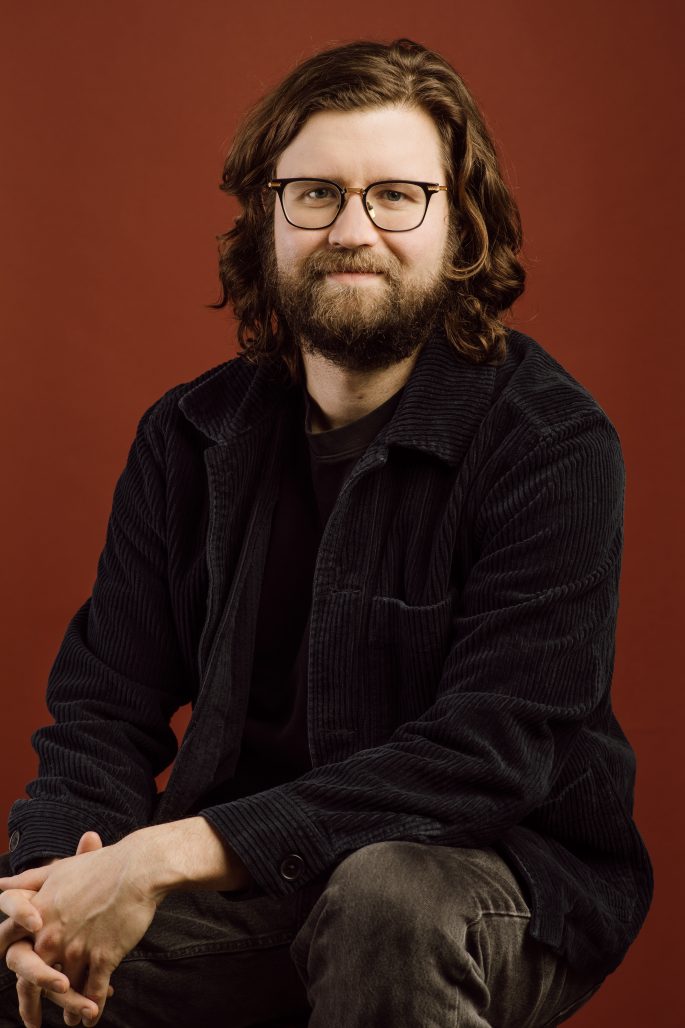
SERRANO: That’s exactly the response I want to hear. So I know you guys have worked on documentaries, you’ve done a lot of series work, even together. How did working in documentaries actually helped you in shaping the horror for this particular movie?
NG: I like to think that to be a true master of the craft, you have to embrace all aspects of it, cross genres and so forth. But I do think that when working in documentary, you’re taking footage that is essentially real and trying to make it cinematic. Working in that sort of field, we have a lot of practice creating cinema out of regular things, which are things that are based in reality and so called truth. But then working in narrative, it’s the opposite. It’s like, how do we create this fictional stuff, and then sort of instill it with a sense of reality. I feel like when you’re working in both of those things, they inform each other just by the approach of it.
FORTIN: I think there’s a lot of room for experimentation in documentary. And I would say, in horror, there’s also a lot of room for, or genre thrillers, there’s room for experimentation, too. I think the practice of experimenting in documentary sort of allows me to at least try things that you normally wouldn’t try in narrative. And it gives you that confidence to say to Oz, “you know I’ve put together this idea, it might be a little crazy, but I’d like to present it to you”. Sometimes he likes it, sometimes he doesn’t. But I think that that documentary background informs that.
NG: I think with documentary everything is flexible and can be bent in any direction. And sometimes when you’re working on genre movies, it’s more about how can we take this thing that’s intended for this, but bend it backwards and flip it inside out? To be something else that is in line with the story, but not necessarily something that they planned.
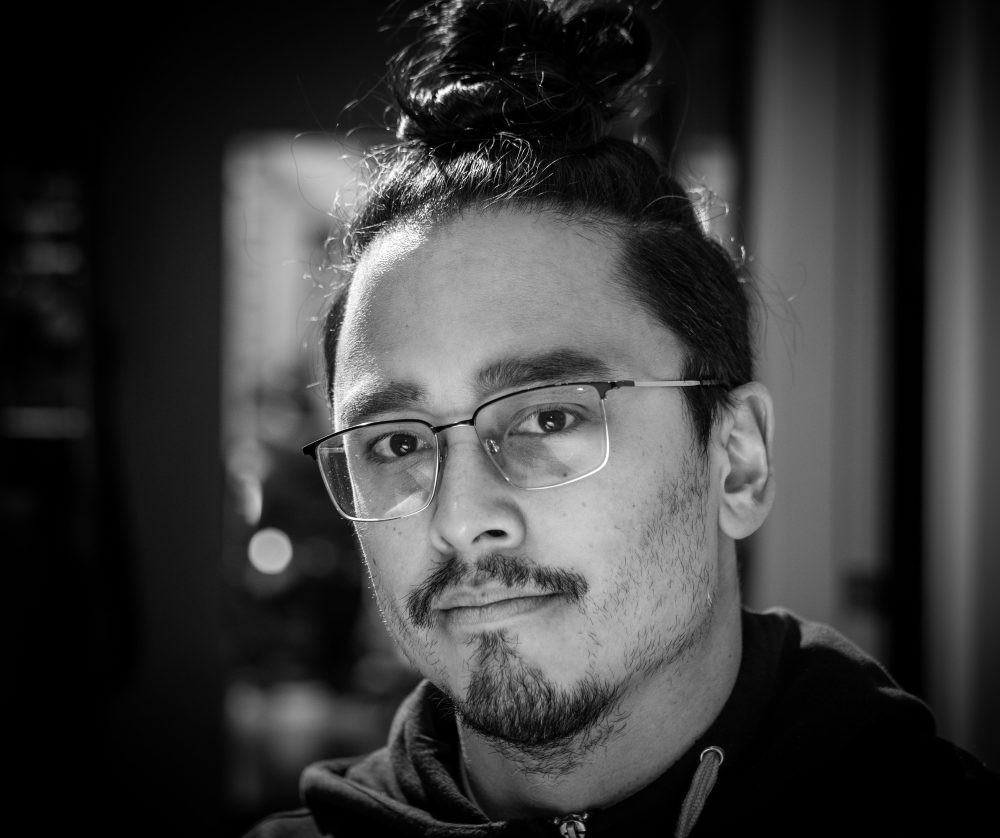
SERRANO: Oz Perkins’ films have a very particular pace and sense of dread, and this one particularly also has that element of surprise, of keeping that mystery hidden. So I wanted to know how you worked together to keep that tension and that dread alive, but at the same time with holding a lot of information.
FORTIN: We always talked about the ingredients that were given. And a lot of that tension, a lot of that dread is baked into the material that comes to us. You can appreciate how all of the different departments come together to create what is Longlegs once it gets to us. That material, as we crafted, you know, the shape of it is in the bones of it, that terror and that dread.
NG: As you may know, when editing, you are very close to the material. And it can be hard to maintain some sort of objectivity to the whole thing. But there was something special with the project where we knew like, oh, wait, this scene here, Nick Cage in the snow, this is really working, there’s a tone here, there’s something here. We know this is working, you know, later on when he’s in degradation, we’ve got something special here, we know that the shapes and feelings of those things need to be where they are. But, you know, the difficult work is parsing out how much you know at a certain point of time. What is enough to keep people interested and yet not to say too much? So it’s a big balancing act. It’s like, we’re sort of trusting that we’re giving people enough information. I think, also, part of the notes process is getting feedback from producers, the other filmmakers, and that is something that’s on the one hand, it’s like “oh notes”, but on the other hand, like these notes are coming from people that want the movie to be successful.
FORTIN: Being in the room with the test audiences, that gives you a lot of emotional guidance.
NG: People don’t even have to say anything. Once you’re in the room and people are watching it, you get a pretty good sense of what’s happening. I also did see Longlegs with a friend a couple of days ago and it was a completely different screening of all the screenings that I’ve been to because it was like, I guess it was the Wednesday crowd, but the vibe was much more different. And the people that were watching behind us, one of the ladies was like “I’m so confused. I don’t know what’s happening, but it’s terrifying”. Like the ride, the roller coaster was going but you know, certain details maybe weren’t sticking. But she was still having an enjoyable experience.
SERRANO: In terms of Nicolas Cage and his character, and the importance of also withholding him, what was your goal there? How hard was it to not show too much of him in your cuts? What was your core discipline when you were working with his scenes in particular?
NG: I feel like in an early version of the script, and even the cuts, there was more Cage up front. But I think everybody knew it felt like it’s too much too soon. If you show him too much, then what’s happening? What are we saving for later? So it was a balancing act of, you know, you want to show just enough, sort of give you enough intrigue to ride out the rest of the movie until he slowly gets revealed. But it took a long time to get to the point where he’s eventually revealed and you sort of just pick up enough of him throughout the experience of the movie, that by the time he actually has a scene it’s not like a big curtain opening moment. All the pieces just kind of come together.
FORTIN: Yeah, in terms of dealing with the scenes of him, just individually and handling him, you treat it like any other scene. But once you get into it, you’re putting it together, and you get into that zone of crafting an edit. However, there are moments when you’re doing that and you’re like “Oh, my God, I’m cutting a Nicolas Cage scene”. And it’s like, crazy. It’s not just any normal Nicolas Cage scene. It’s like, he looks like you’ve never seen him before. Sounds like nothing you’ve ever seen before. So it was a little surreal.
NG: One of the overarching things of his character that did help us inform how he was to be presented, is he’s kind of, you know, spoiler alert here just in case, he’s presented in a sort of glam rock kind of washed up way. And he’s not necessarily like a super evil person. He’s like a tired kind of old glam rock dude, who happens to, you know, be the right hand of Satan. So that was it.
FORTIN: We did have a photo of T. Rex’s Marc Bolan, just like, behind the editing screens. Just to keep him in the subconscious.
NG: There are also a lot of subliminal, other little demonic easter eggs throughout the movie, which are very subtle. Then there are others that aren’t so much. Some of them you can catch. But that was kind of our sort of glam rock peppering in of fun things from the demonic imagery that hopefully, if people didn’t notice, they would sort of subconsciously absorb and feel and get scared.
SERRANO: How was it working with Oz Perkins?
FORTIN: I feel extremely fortunate and, you know, this is like a career high working with him. He’s so smart. And his vision. He knows exactly what he wants. And he’s open to experimentation and collaboration. You know, it’s a dream working with him.
NG: He’s a super hilarious guy. So coming into the office to work on the demonic things is super fun. And, you know, the subsequent projects that we’ve worked with him, we’re still working on right now but they are very different from Longlegs. And I think people will get a good kick out of them so we’re pretty happy with the next couple of movies. And hopefully there’s a few more in there as well.,
SERRANO: Can you talk to me a little bit about how you’ve worked together in the past? Your collaborations as co-editors, and this particular project as well?
NG: Graham and I have been working together for a very long time. Graham was my assistant editor at one point in time, way back 11 or 12 years ago working on a movie called Afflicted. And prior to that we had a sort of group of friends along with the producer Chris Ferguson and we were making short films, fast films, Halloween films, and just trying to make cool things happen. So eventually, everyone kind of just grew and graduated to where we are today. Obviously, Graham and I have started working on a few things together, and worked on a couple doc series together. It’s very easy to work when you’re friends that you’ve been around for a long time. It’s been kind of a dream situation, because we hang out occasionally but we also work on cool things, which is kind of neat!
FORTIN: Oh, Greg, Greg is the best and he’s always been extremely supportive of my career. So I will say thank you to Greg and I will say also in post-production, it can be quite an isolating part of the process. So it is, I think, wonderful to be able to work with someone who I can reach out to and say, “hey, I’m having trouble with this scene or this project”. Maybe not even a movie but something else and you know, we talk about it. It’s like there’s an editor’s therapy that happens on the phone. Right? It really does help with the creative process of editing.
NG: And your mental well being. When you’re hanging around with other editors all the time, you can talk about some deep stuff, and no one will understand what you’re talking about. But it’s good to have.
SERRANO: In regards to Longlegs, how did you divide and conquer while you were working on it? What was your approach?
FORTIN: You treat it like any film where the material comes in. And, you know, you’re kind of slogging through it to build something that’s actually presentable for the director. From there, you till the soil with Oz, and he likes to get in the soil and dig deep, paraphrasing Cage in the movie, and go through the material and see what he has, and build it back up so that it is filtered through in his mind and his vision.
NG: As far as the way that we work together, it is kind of complicated. Kind of a scheduling thing. Graham was sort of there more in the beginning and I was there more in the end. And, you know, it’s like — You ever watch wrestling? Tag teams? It’s a little bit like that, in an ideal situation, when you’re working with multiple editors. It’s nice to have people just to bounce ideas off. And if you’re running out of steam, you tag in and you tag out. Someone’s coming in with some fresh perspective and can win the title and carry the belt back home.
SERRANO: We’ve talked about how frightening the film is and how you approach that, but was there any particular moment where it was just like, “yeah, I really want to hit people in the face”. “I want this to be scary right here”. What particular moment was that for you?
NG: I wanted the whole thing to obviously be as scary as possible, but we realized it has a lot of humor in it too. And part of what helps with making it scary, is it’s sort of grounded in pretty believable characters who you’re invested in. I like to think that performances by Maika Monroe, and Blair Underwood, and Alicia Witt, they’re all very grounded performances. Some of the side characters, though, are very funny. And some of the things that, for example, Blair Underwood says are quite funny. And without those moments of kind of release, I don’t know the scares would be as good. I think some of my favorite moments are towards the end of the movie, when everything becomes kind of clear with Lee Harker’s backstory, the sort of final showdown, all that stuff. I think they’re some of the brightest moments we have in the movie. It was very difficult to get to that point.
FORTIN: Yeah, I would agree that in terms of the build up of the first two acts and then that roller coaster ride of the third act, watching it back again in the theaters like you can really feel that roller coaster ride sensation.
